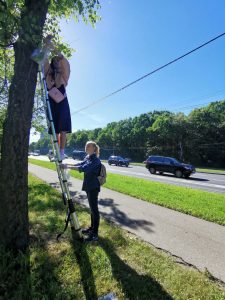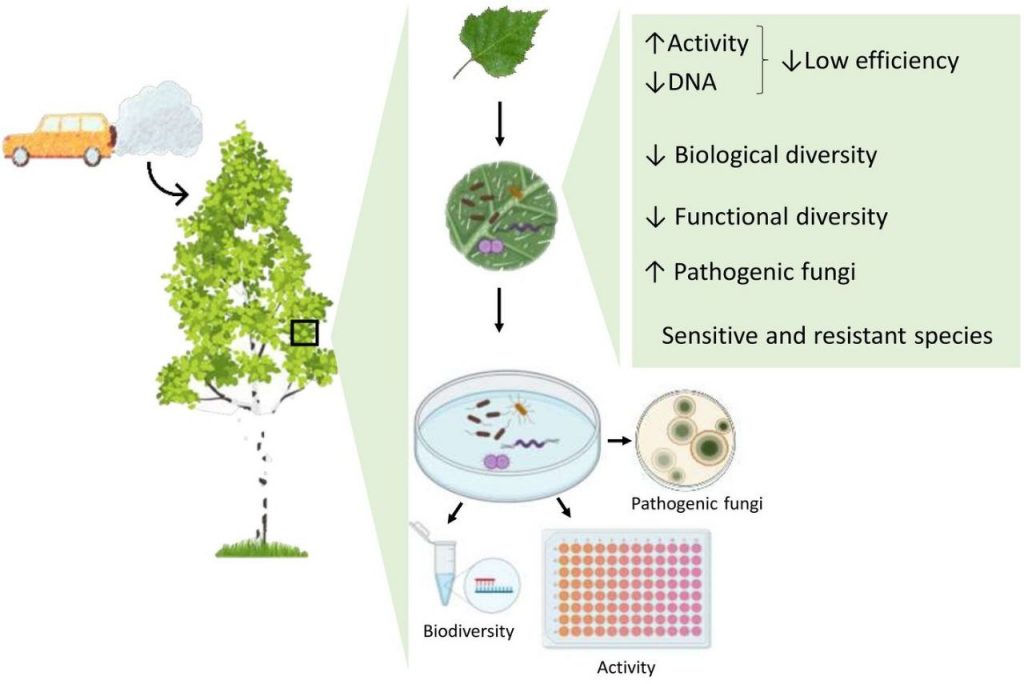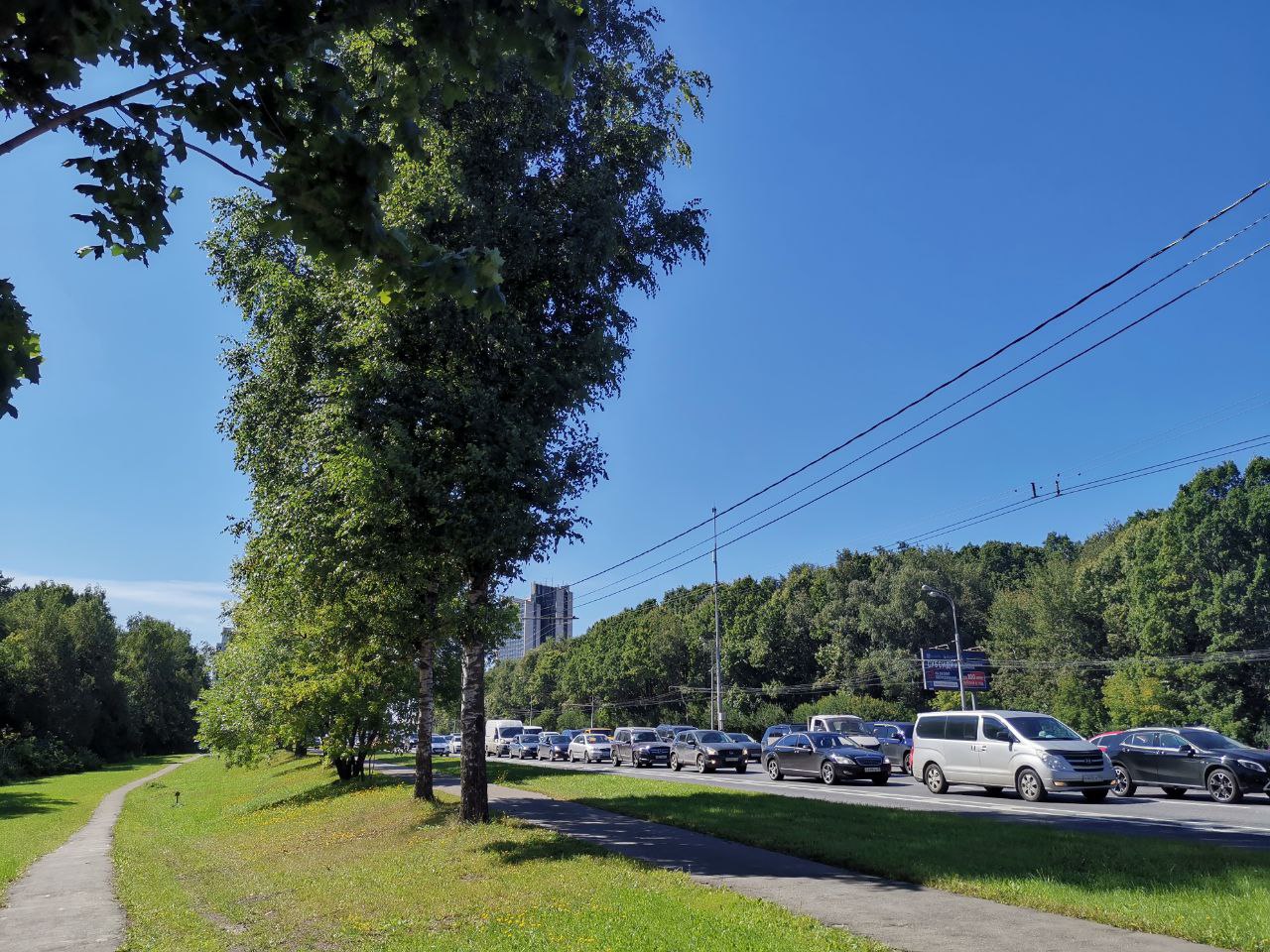Scientists from the Smart Urban Nature laboratory, in collaboration with colleagues from the Netherlands and Italy, have shown that microbial communities living on the surface of leaves are sensitive to transport pollution. With the approach to highways, the activity of microorganisms increases, their species diversity decreases, and the proportion of conditionally pathogenic forms increases. These changes are associated with an increased concentration of pollutants (mainly Zinc) and microclimatic conditions near the roads: low humidity, high temperature and ultraviolet radiation. It is important to note that the study of plant microorganisms will help assess the ecological state of nature in the city and their possible impact on human health. Article published in Plants (Q1) journal. The research was partly supported by Russian Foundation for Basic Research (RFBR) and Russian Science Foundation (RSF).
Plants are an important part of the urban environment. They shape the microclimate, absorb greenhouse gases, clean the air of dust and help preserve biodiversity. In order for plants to perform these functions well, they must be healthy. A significant role in this is played by microorganisms living on the surface of the leaves, the phyllosphere.
According to various studies, anthropogenic pressure in urban conditions can affect the species composition of the leaf micropopulation, suppressing some groups of organisms and increasing the proportion of other, more resistant ones. However, understanding which microbes enter the phyllosphere is not enough to explain how this system functions under adverse conditions. An informative parameter is the activity of microorganisms, which characterizes their participation in metabolic processes, the ability to grow and reproduce. Under stress conditions, for example, most soil microorganisms can be dormant.
 Until now, the activity of the phyllosphere has been little studied, and researchers from the Smart Urban Nature laboratory of the Peoples’ Friendship University of Russia (Moscow), the Institute of Physicochemical and Biological Problems of Soil Science of the Russian Academy of Sciences (Pushchino), the Kola Scientific Center of the Russian Academy of Sciences (Apatity), the Institute of Biochemistry and Physiology of Microorganisms named after G. K. Skryabin of the Russian Academy of Sciences (Pushchino), Moscow State University named after M. V. Lomonosov (Moscow), Wageningen University (Netherlands) and the Research Institute of Terrestrial Ecosystems (Italy) decided to fill this knowledge gap. They found out how the biological characteristics of the pendulous birch (Betula pendula) phyllosphere change depending on the proximity of the tree to a busy road in Moscow. This type of plant is typical for the urban environment of the region, and due to the structure of the leaf and crown, it is able to accumulate a large amount of harmful fine dust.
Until now, the activity of the phyllosphere has been little studied, and researchers from the Smart Urban Nature laboratory of the Peoples’ Friendship University of Russia (Moscow), the Institute of Physicochemical and Biological Problems of Soil Science of the Russian Academy of Sciences (Pushchino), the Kola Scientific Center of the Russian Academy of Sciences (Apatity), the Institute of Biochemistry and Physiology of Microorganisms named after G. K. Skryabin of the Russian Academy of Sciences (Pushchino), Moscow State University named after M. V. Lomonosov (Moscow), Wageningen University (Netherlands) and the Research Institute of Terrestrial Ecosystems (Italy) decided to fill this knowledge gap. They found out how the biological characteristics of the pendulous birch (Betula pendula) phyllosphere change depending on the proximity of the tree to a busy road in Moscow. This type of plant is typical for the urban environment of the region, and due to the structure of the leaf and crown, it is able to accumulate a large amount of harmful fine dust.
The study showed that as we approach transport pollution, the functional and species diversity of microorganisms on the surface of birch leaves decreases (by 30% and 12%, respectively), while their activity and the number of pathogens, on the contrary, increase (by 37% and 17%, respectively). Thus, fungi of a particularly dangerous group (for example, Aspergillus flavus, A. fumigatus, A. ochraceus, Paecilomyces variotii) were found only at a distance of 2 and 10 meters from the road. This is because the concentration of potentially toxic elements in the soil and air increases, the temperature is higher, the humidity is lower, and the plants stand apart and are more exposed to ultraviolet radiation. Pathogenic fungi, in turn, have adapted to adverse conditions, for example, the melanin contained in them protects them both from excess ultraviolet radiation and neutralizes toxic substances, especially zinc.
We found that the number of opportunistic pathogens living on the surface of tree leaves is increasing along the road. Therefore, it is important to remove fallen leaves in such areas in a timely manner in order to reduce the risk of various infections in immunocompromised citizens. In addition, care must be taken when harvesting leaves or pruning tree crowns, use personal protective equipment for the skin and respiratory organs, comments Kristina Ivashchenko, researcher at the Smart Urban Nature Center and the Institute of Physical, Chemical and Biological Problems of Soil Science of the Russian Academy of Sciences.

The sensitivity of the phyllosphere to anthropogenic pollution makes it possible to use it as a bioindicator, a tool for assessing the quality of the environment based on the state of the biota. The information obtained will help in making decisions in the field of sustainable urban development.

